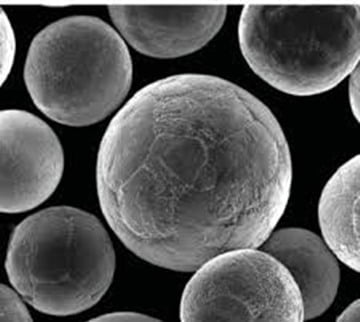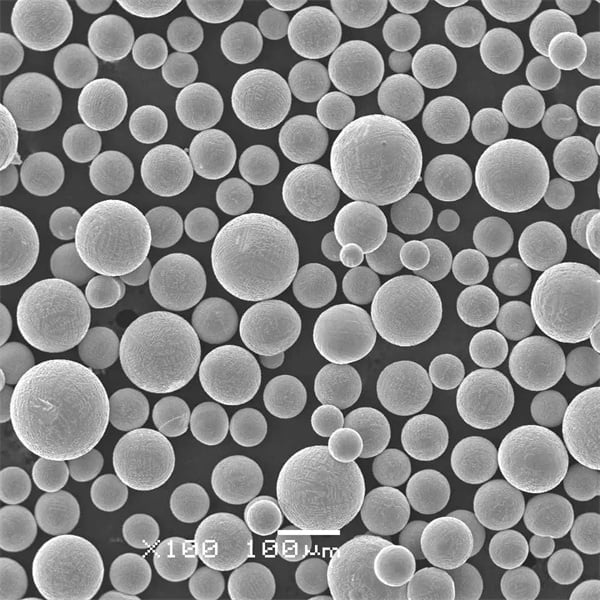Metal alloy powder materials are increasingly becoming a cornerstone in various industrial applications due to their unique properties and versatility. Whether you’re into additive manufacturing, metallurgy, or even electronics, understanding these materials can open doors to innovative solutions and advancements. In this article, we delve deep into the world of metal alloy powders, covering everything from specific models to their applications, specifications, and more.
Overview
Metal alloy powders are fine particulate forms of metals that are often mixed with other elements to achieve specific properties. These materials are pivotal in numerous industries, thanks to their enhanced mechanical, thermal, and electrical properties. They are crucial in additive manufacturing (3D printing), metal injection molding, and various other fabrication processes.
Types of Metal Alloy Powders
| Type | Composition | Properties | Characteristics |
|---|---|---|---|
| Stainless Steel 316L | Fe, Cr, Ni, Mo | Corrosion resistance, high strength | Non-magnetic, excellent weldability |
| Aluminum 6061 | Al, Mg, Si | High strength-to-weight ratio, good corrosion resistance | Lightweight, easy to machine |
| Titanium Ti6Al4V | Ti, Al, V | High strength, lightweight, biocompatibility | High fatigue strength, good thermal stability |
| Nickel 625 | Ni, Cr, Mo, Nb | Excellent corrosion and oxidation resistance | High creep rupture strength, versatile |
| Cobalt Chrome | Co, Cr, Mo | High wear resistance, biocompatibility | Excellent mechanical properties at high temperatures |
| Tool Steel H13 | Fe, Cr, Mo, V | High toughness, wear resistance | Maintains hardness at high temperatures, good machinability |
| Inconel 718 | Ni, Cr, Fe, Nb, Mo | High strength, oxidation resistance | Excellent weldability, resistant to post-weld cracking |
| Copper Alloy C18150 | Cu, Cr, Zr | High electrical and thermal conductivity | Good wear resistance, high strength |
| Brass 260 | Cu, Zn | Good machinability, corrosion resistance | Attractive appearance, good strength |
| Magnesium AZ91D | Mg, Al, Zn | Lightweight, high strength-to-weight ratio | Good castability, excellent corrosion resistance in certain environments |

Applications of Metal Alloy Powder Material
| Application | Alloy Types Used | Benefits |
|---|---|---|
| Additive Manufacturing (3D Printing) | Titanium Ti6Al4V, Inconel 718, Stainless Steel 316L | Complex geometries, reduced waste, customization |
| Metal Injection Molding (MIM) | Tool Steel H13, Stainless Steel 316L | Precision parts, high production rates |
| Aerospace Components | Nickel 625, Titanium Ti6Al4V | High strength, lightweight, heat resistance |
| Medical Implants | Cobalt Chrome, Titanium Ti6Al4V | Biocompatibility, high wear resistance |
| Automotive Parts | Aluminum 6061, Magnesium AZ91D | Lightweight, fuel efficiency |
| Electrical Conductors | Copper Alloy C18150, Brass 260 | High conductivity, durability |
| Tool and Die Making | Tool Steel H13, Inconel 718 | High toughness, wear resistance |
| Oil and Gas | Inconel 718, Stainless Steel 316L | Corrosion resistance, high strength |
| Jewelry | Brass 260, Stainless Steel 316L | Attractive appearance, durability |
| Consumer Electronics | Aluminum 6061, Copper Alloy C18150 | Lightweight, high conductivity |
Specifications, Sizes, Grades, Standards
| Alloy Type | Specification | Sizes | Grades | Standards |
|---|---|---|---|---|
| Stainless Steel 316L | ASTM A240, A276 | Powder: 5-150 microns | 316L | ISO 5832-1, UNS S31603 |
| Aluminum 6061 | ASTM B211, B221 | Powder: 10-100 microns | 6061-T6 | UNS A96061 |
| Titanium Ti6Al4V | ASTM B348, F136 | Powder: 15-45 microns | Grade 5 | ISO 5832-3, AMS 4911 |
| Nickel 625 | ASTM B443, B446 | Powder: 15-45 microns | UNS N06625 | ISO 15156-3, AMS 5599 |
| Cobalt Chrome | ASTM F75, F1537 | Powder: 15-53 microns | Alloy 1, Alloy 2 | ISO 5832-4 |
| Tool Steel H13 | ASTM A681 | Powder: 15-63 microns | H13 | UNS T20813 |
| Inconel 718 | ASTM B637, B670 | Powder: 15-45 microns | UNS N07718 | AMS 5662, ISO 15156-3 |
| Copper Alloy C18150 | ASTM B442, B532 | Powder: 15-45 microns | C18150 | UNS C18150 |
| Brass 260 | ASTM B134, B36 | Powder: 15-63 microns | 260 | UNS C26000 |
| Magnesium AZ91D | ASTM B93, B94 | Powder: 15-45 microns | AZ91D | ISO 16220 |
Suppliers and Pricing Details
| Supplier | Alloy Types Available | Price Range |
|---|---|---|
| Höganäs AB | Stainless Steel 316L, Tool Steel H13 | $50 – $300 per kg |
| Carpenter Technology | Titanium Ti6Al4V, Inconel 718 | $100 – $500 per kg |
| Sandvik | Nickel 625, Cobalt Chrome | $80 – $400 per kg |
| AMETEK | Copper Alloy C18150, Brass 260 | $30 – $150 per kg |
| GKN Hoeganaes | Aluminum 6061, Stainless Steel 316L | $60 – $250 per kg |
| ATI Metals | Inconel 718, Titanium Ti6Al4V | $120 – $600 per kg |
| Rio Tinto Metal Powders | Tool Steel H13, Aluminum 6061 | $50 – $200 per kg |
| Praxair Surface Technologies | Cobalt Chrome, Nickel 625 | $90 – $450 per kg |
| LPW Technology | Stainless Steel 316L, Titanium Ti6Al4V | $70 – $350 per kg |
| Epson Atmix | Magnesium AZ91D, Copper Alloy C18150 | $40 – $180 per kg |






Advantages of Metal Alloy Powder Material
Metal alloy powders offer several significant advantages that make them ideal for a wide range of applications:
- Customizability: Ability to tailor compositions to achieve specific properties.
- Efficiency in Manufacturing: Ideal for additive manufacturing, reducing waste and allowing for complex geometries.
- Strength and Durability: High strength-to-weight ratios and excellent mechanical properties.
- Corrosion Resistance: Many metal alloy powders exhibit superior resistance to corrosion and oxidation.
- Thermal Stability: Maintains properties at high temperatures, suitable for high-temperature applications.
- Biocompatibility: Essential for medical implants and devices, ensuring safety and compatibility with the human body.
Disadvantages of Metal Alloy Powder Material
While metal alloy powders offer many benefits, they also come with some drawbacks:
- Cost: Often more expensive than bulk metals due to the complex manufacturing processes.
- Handling and Safety: Fine powders can be hazardous, requiring careful handling and storage.
- Equipment Needs: Specialized equipment is required for processes like additive manufacturing and MIM.
- Powder Characteristics: Issues such as powder flowability and particle size distribution can affect processing and quality.
Comparison of Metal Alloy Powder Materials
| Property | Stainless Steel 316L | Aluminum 6061 | Titanium Ti6Al4V | Nickel 625 | Cobalt Chrome | Tool Steel H13 | Inconel 718 | Copper Alloy C18150 | Brass 260 | Magnesium AZ91D |
|---|---|---|---|---|---|---|---|---|---|---|
| Density | High | Low | Medium | High | High | High | High | Medium | Medium | Low |
| Strength | High | Medium | High | High | High | High | High | Medium | Medium | Medium |
| Corrosion Resistance | High | Medium | High | High | High | Medium | High | Medium | Medium | High |
| Thermal Conductivity | Medium | High | Low | Low | Low | Medium | Low | High | Medium | Medium |
| Cost | Medium | Low | High | High | High | Medium | High | Medium | Medium | Low |

FAQ
| Question | Answer |
|---|---|
| What is metal alloy powder used for? | Metal alloy powder is used in additive manufacturing, metal injection molding, and various fabrication processes. |
| Why choose metal alloy powder? | It offers high customizability, excellent mechanical properties, and efficiency in manufacturing. |
| What are the safety concerns with metal powders? | Fine powders can be hazardous; proper handling and storage are essential. |
| How does the cost of metal alloy powder compare to bulk metals? | Metal alloy powders are typically more expensive due to complex manufacturing processes. |
| Which industries benefit the most from metal alloy powders? | Aerospace, medical, automotive, and electronics industries are some of the primary beneficiaries. |
| Can metal alloy powders be recycled? | Yes, metal alloy powders can often be recycled, depending on the material and application. |
| What equipment is needed for working with metal alloy powders? | Specialized equipment for additive manufacturing, MIM, and other processes is required. |
| How do you choose the right metal alloy powder? | Consider factors like required properties, application, cost, and availability. |
| Are there any environmental concerns with metal powders? | Proper handling and disposal are crucial to mitigate environmental impact. |
| What are the future trends in metal alloy powder materials? | Advancements in additive manufacturing, new alloy compositions, and enhanced processing techniques are on the horizon. |
Conclusion
Metal alloy powder materials are revolutionizing industries with their versatile properties and wide-ranging applications. From aerospace to medical implants, these powders are paving the way for advanced manufacturing techniques and innovative solutions. By understanding the various types, applications, and specifications, you can leverage these materials to their fullest potential, driving efficiency and performance in your projects.
By diving into the intricate world of metal alloy powders, this guide aims to equip you with the knowledge needed to make informed decisions, whether you’re selecting a material for a new project or optimizing existing processes. The future of manufacturing is bright with these advanced materials leading the charge.
About 3DP mETAL
Product Category
CONTACT US
Any questions? Send us a message now! After receiving your message, we will process your request with a whole team.
